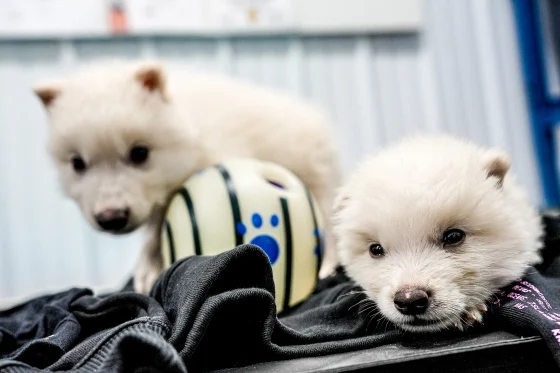Three genetically engineered wolves, potentially resembling the extinct dire wolves, are currently in an undisclosed secure location in the U.S., according to Colossal Biosciences. These pups, ranging from three to six months old, already have long white fur, muscular jaws, and weigh about 80 pounds, with projections that they will reach 140 pounds at maturity. These traits are reminiscent of the much larger dire wolves that roamed North America over 10,000 years ago, which were significantly bigger than today’s gray wolves.
However, independent scientists caution that this project doesn’t imply that dire wolves are being brought back in a functional, ecological sense. Vincent Lynch, a biologist at the University at Buffalo, emphasized that the effort is still far from fully reviving the extinct species. “All you can do now is make something look superficially like something else,” he said, acknowledging that these genetically engineered wolves are not true re-creations of the extinct dire wolves.
Colossal Biosciences scientists used ancient DNA from fossils, including a 13,000-year-old dire wolf tooth from Ohio and a 72,000-year-old skull fragment from Idaho, to identify traits of dire wolves. They then employed CRISPR technology to genetically modify blood cells from living gray wolves at 20 different sites. These modified cells were transferred to egg cells from domestic dogs, and the embryos were implanted into dog surrogates. After 62 days, the genetically engineered wolf pups were born.
Despite these physical resemblances, Colossal’s chief animal care expert, Matt James, pointed out that these pups won’t be able to naturally learn hunting skills, such as how to kill large prey like elk or deer, without the guidance of wild dire wolf parents. While the project showcases the potential of genetic engineering, it’s clear that these wolves won’t replicate the ecological role the extinct dire wolves once played.
In addition, Colossal announced it had cloned four red wolves using blood drawn from the critically endangered population in the southeastern U.S. The goal is to increase genetic diversity within the population, which is vital for the survival of the species. Experts like Christopher Preston, a wildlife specialist at the University of Montana, noted that while cloning red wolves can be valuable for conservation, it still presents challenges, such as the need to sedate wild wolves for blood samples.
Colossal CEO Ben Lamm shared that the team met with U.S. Interior Department officials about their efforts, with Interior Secretary Doug Burgum calling it a “thrilling new era of scientific wonder.” However, some scientists remain cautious, pointing out that even if dire wolves could be revived, they wouldn’t have the same ecological functions they did before extinction.
